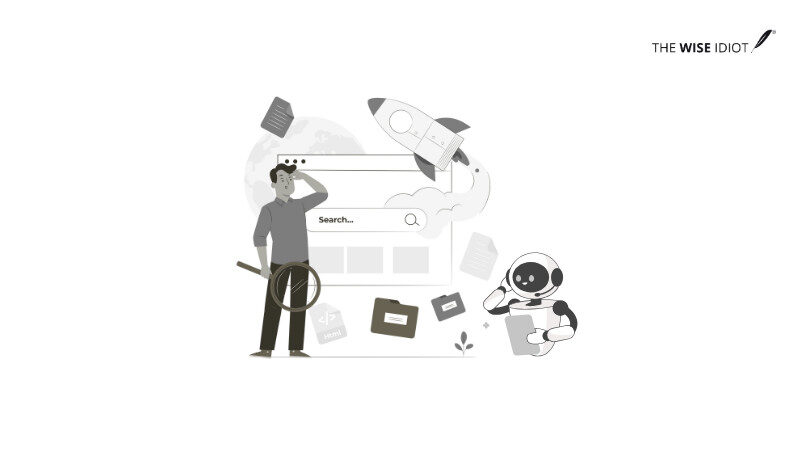Search used to be a keyword game. Now, it’s a comprehension game. Google isn’t just crawling your content anymore, it’s trying to summarize it, speak it aloud, and use it to answer questions directly.
If your blog can’t be easily quoted, chunked, or reused by AI systems, it won’t rank—no matter how well-written it is for humans.
Clarity, structure, and semantic depth have become just as important as originality and voice.
This is the future of SEO. And it demands a new content strategy—one built not just for visibility, but for utility in an AI-first search experience.
Table of Contents
ToggleThe 4-Layered SEO Stack for 2025
To stay competitive in the evolving SEO future, your content needs to be optimized on four fronts:
- GEO – Generative Engine Optimization
- AEO – Answer Engine Optimization
- AIO – AI Interaction Optimization
- SXO – Search Experience Optimization
Most teams obsess over GEO. Some are starting to figure out AEO. Almost no one has cracked AIO. And SXO? That’s the deal-closer, the part that turns visibility into action.
Let’s Break It Down
GEO – Get Found by AI
This is your crawling and comprehension layer. The goal is simple: ensure AI systems like ChatGPT, Perplexity, Gemini, and Bing can find your content—and understand it. That means clear structure, strong semantics, and metadata that signals meaning, not just keywords.
How to do it:
- Use comparisons, pros/cons, POV-driven formats.
- Add multimedia-don’t serve walls of text.
- Link to external authority (not just internal pages).
- Write with narrative clarity, not keyword stuffing.
- Publish in hub-and-spoke clusters.
Pro tip: Test your content with an LLM before publishing. If AI struggles to summarize it, Google will too.
AEO – Be the Answer Fast
This is your precision layer. The goal here is crisp, quotable clarity.
Can Google lift a sentence or two from your content and use it as a direct answer? If not, you’re not AEO-ready.
How to do it:
- Start with the answer (not the story).
- Use schema markup: FAQ, HowTo, Article.
- Add clear, direct summaries under every H2.
- Structure content like you’d structure a presentation deck.
- Use NLP-friendly phrasing that AI systems parse easily.
Pro Tip: Add 2–3 FAQs to every blog—and mark them up properly. You’d be surprised how often AI Overviews pull directly from those lines.
AIO – Build for Summarization + Reuse
This is your formatting layer. You’ve been found. You’ve been quoted. Now, your content needs to be reusable.
It must be structured in a way that AI systems can chunk, remix and repurpose it across different queries and formats.
How to do it:
- Break content into modular blocks (TL;DRs, Q&As, tables).
- Include images that explain-not decorate.
- Predict follow-up questions and answer them inline.
- Optimize for clarity, not cleverness.
- Use structured CTAs that help AI identify next steps.
Pro Tip: Put a copy-paste-ready TL;DR at the top of every long-form post.
SXO – Turn Clicks into Outcomes
This is your experience and conversion layer, the part that kicks in after you’ve won visibility.
Great content earns the click, but SXO ensures the journey feels intuitive, useful and worth completing.
How to do it:
- Audit every page for mobile UX, speed, readability.
- Align design and copy with user intent.
- Remove friction from your CTA flow.
- Track scroll depth and interaction triggers.
- Build content that doesn’t just inform-moves.
Pro Tip: Zero-click doesn’t mean zero-impact.AI Overviews might not always drive traffic, but they do build visibility, authority, and brand recall.
Also Read Our Blog : SEO vs. AIO
The Reality Most Teams Miss
Founders often ask:
“How do we rank in AIO?”
But that’s the wrong question. Because AIO isn’t a tactic, it’s a litmus test for your content.
It reveals whether your content is truly built for today’s web:
- Does it understand the user’s context?
- Does it serve the intent behind the query?
- Is it structured in clean, scannable chunks?
- Can it answer directly, not just describe?
- Does it look great on mobile?
- Does it sound natural when read aloud by AI?
This isn’t about gaming the algorithm, but levelling up your content maturity so it works with AI, not around it.
The Shift in Team Thinking
If you’re leading content or growth today, here’s the mindset to instill:
- Writers aren’t just storytellers. They’re information architects.
- Content isn’t just published. It’s prompt-tested before it ships.
- Length doesn’t matter. Extractability does.
- One blog isn’t one asset. It’s a TL;DR, a visual, schema markup, FAQs, a summary, and a snippet—packaged in one.
If you want AIO visibility, your post shouldn’t just read well to a human. It should feel like a dataset to a machine.
Where’s The Wise Idiot Focusing at
We’ve adapted our SOPs to reflect this AI-first SEO framework and the evolving future of SEO.
Every blog we publish now goes through:
- Prompt-based research – to align with how people actually ask
- AI rewriter testing – to see how clearly the content can be summarized
- Schema tagging & FAQ layering – to support machine parsing and feature placement
- Clarity checks with Perplexity & Gemini – to test real-world AI comprehension
- AIO-formatting – TL;DRs, tables, inline Q&As, and structured takeaways
- Mobile-first experience audits – because bad UX kills even the best content
This is how we’re preparing for the future scope of SEO, one where content must be clear, structured and AI-ready by default.
TL;DR for Founders
In 2025, writing for Google means writing for three things at once:
AI systems. Human readers. User experience.
So when someone on your team asks,
“How long should this blog be?”
or
“Should we include an image here?”
Don’t answer with a rule.
Ask: “Will this help us become the answer?”
Because ranking isn’t the finish line anymore. You need to be:
- Retrieved by AI
- Quoted in overviews
- Reused across formats
- Trusted by users
Want help restructuring your content for this AI-first stack?
That’s what we do best at The Wise Idiot. Let’s make your content the answer.







